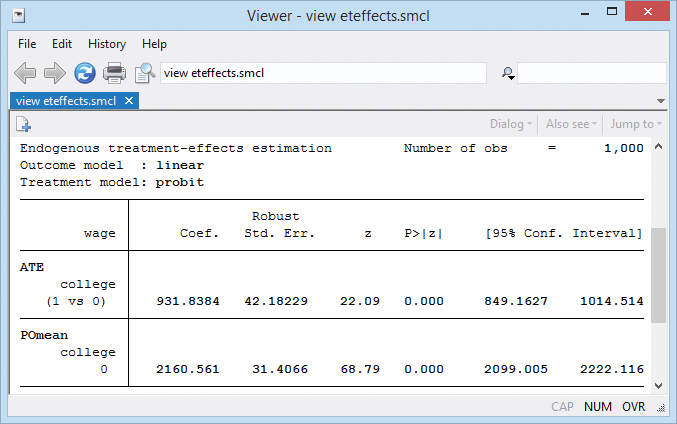Endogenous treatment effects
- Endogenous treatments
- Control-function estimator
- Continuous, binary, count, fractional, and nonnegative outcomes
- Average treatment effect (ATE)
- ATE among the treated (ATET)
- Potential-outcome means (POMs)
Treatment-effects estimators extract experimental-style causal effects from observational data.
New in Stata 14 is dealing with endogeneity, which is to say, when the same unobserved variable(s) affected both treatment and outcome.
We want to measure the effect of a college degree on wages. College is our treatment and wages, our outcome. We fit a model of outcome on treatment. We worry that unobserved ability will affect both wages and college attainment. To eliminate the confounding effect of unobserved ability, we model college attainment. We type
. eteffects (wage tenure c.age##c.age)
(college c.age##c.age i.pcollege)

We modeled wages as determined by job tenure and age, and college attainment, by age and number of parents who attended college. The treatment model was probit; the outcome model, linear.
The estimated ATE is $931.84 per month for college attainment. The potential-outcome mean is the expected wage if no one attended college. It's $2,160.56 per month.
If there is endogeneity and we had not accounted for it, we would have obtained incorrect estimates. In this case, we are using simulated data, and we can tell you that the true ATE was 924. If we were to estimate ATE ignoring the endogeneity, Stata would report an ATE of $1,514.
Upgrade now Order StataRead even more about endogenous treatment effects.







